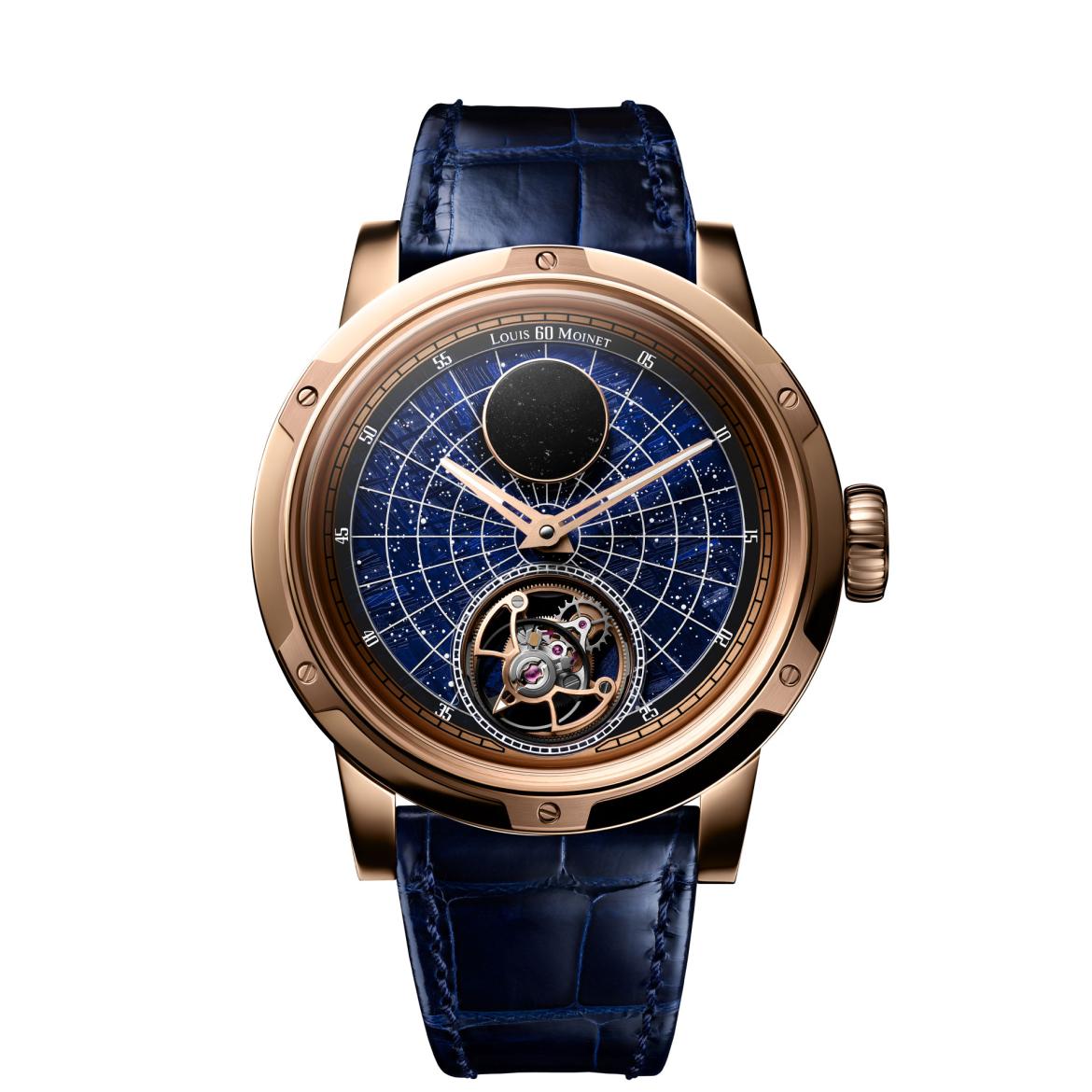Quick specs Louis Moinet Starman
Price: on request
Size: 47.4 mm
Reference:
LM-139.50.25 (red gold)
LM-139.70.20 (white gold) – limited to 12 pieces each
Louis Moinet’s Starman watch is a remarkable tribute to both horology, the chronograph, and the mysteries of the cosmos. It incorporates a fragment of the Jbilet Winselwan meteorite, which contains amino acids, the building blocks of life. This black meteorite fragment found in the western Sahara Desert in 2013 is just one of the many complex elements of the watch’s dial.
The base of the dial is cut from another meteorite, the Gibeon meteorite, a stone known for its Widmanstätten pattern or Thomson structures. Which is also on the sub dials of this Zenith Chronomaster Original Triple Calendar Limited Edition For Hodinkee. It fell in Namibia, Africa, in prehistoric times and the material adds depth and history to the watch’s design. Although Louis Moinet decided to paint it blue for this dial. It feels a bit if you paint the dial of a 100-year-old Louis Moinet watch orange because you like that color.
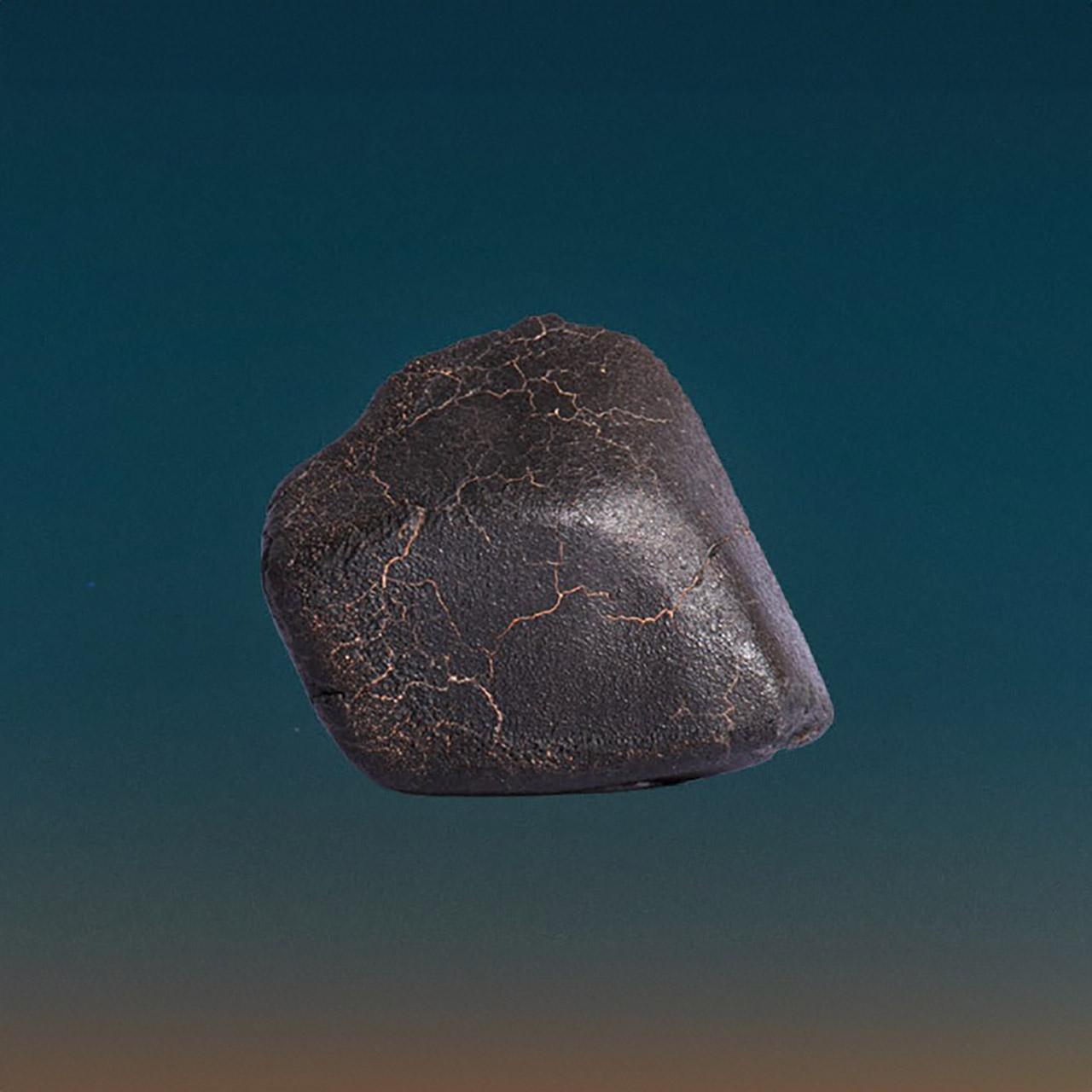
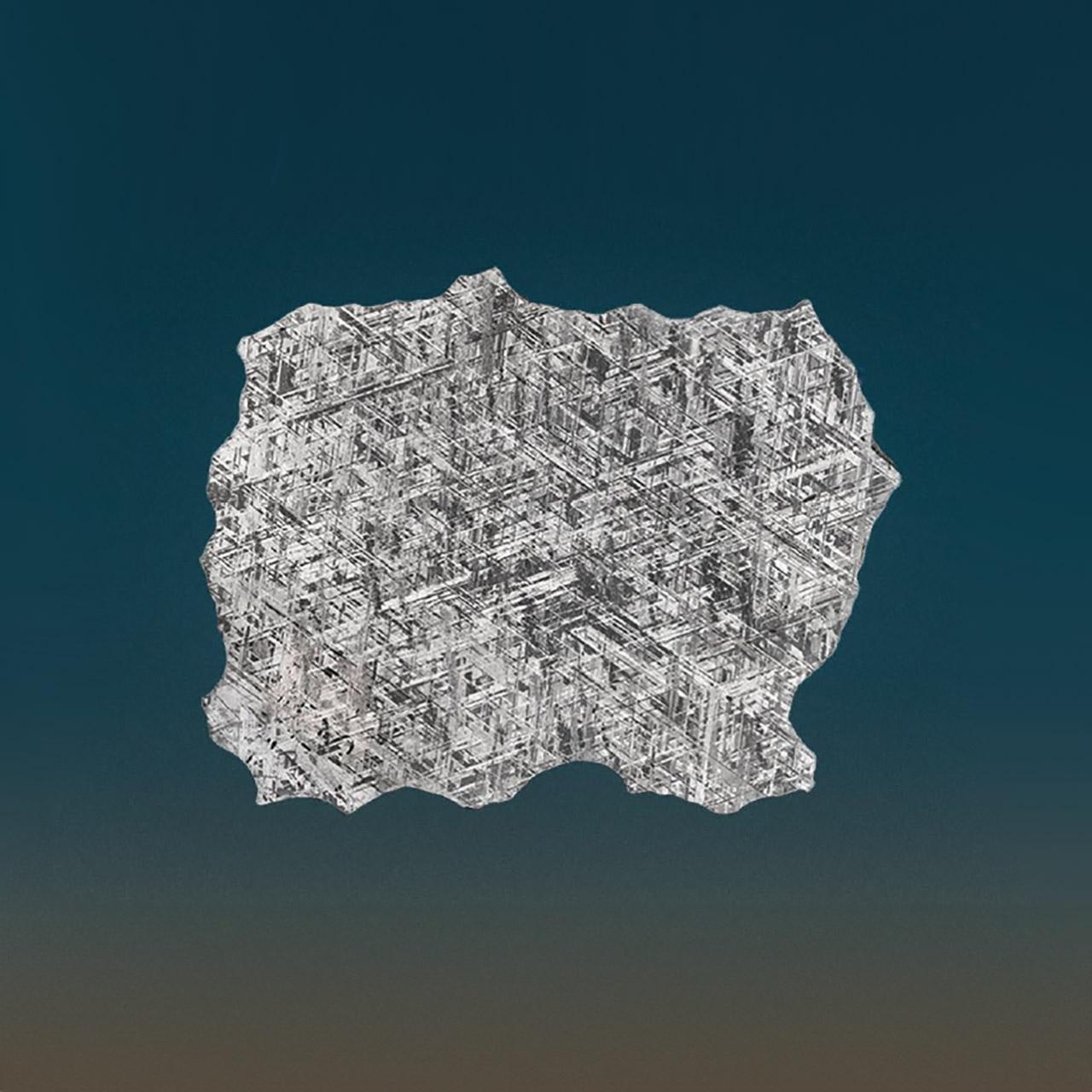
Multiple layered dial
On top of this blue-tinted Gibeon meteorite as base, is a sapphire disc with a hand-painted map of stars with luminescent material. Cool in the dark. Then there is a steel gold-colored minute track and a black sapphire ring with 5-minute intervals plus a tourbillon frame with a seconds scale.
Lastly, there is a piece of the Jbilet Winselwan meteorite at the noon position. The hour and minute hands have the same color as the case. They are faceted and skeletonized and have luminova.
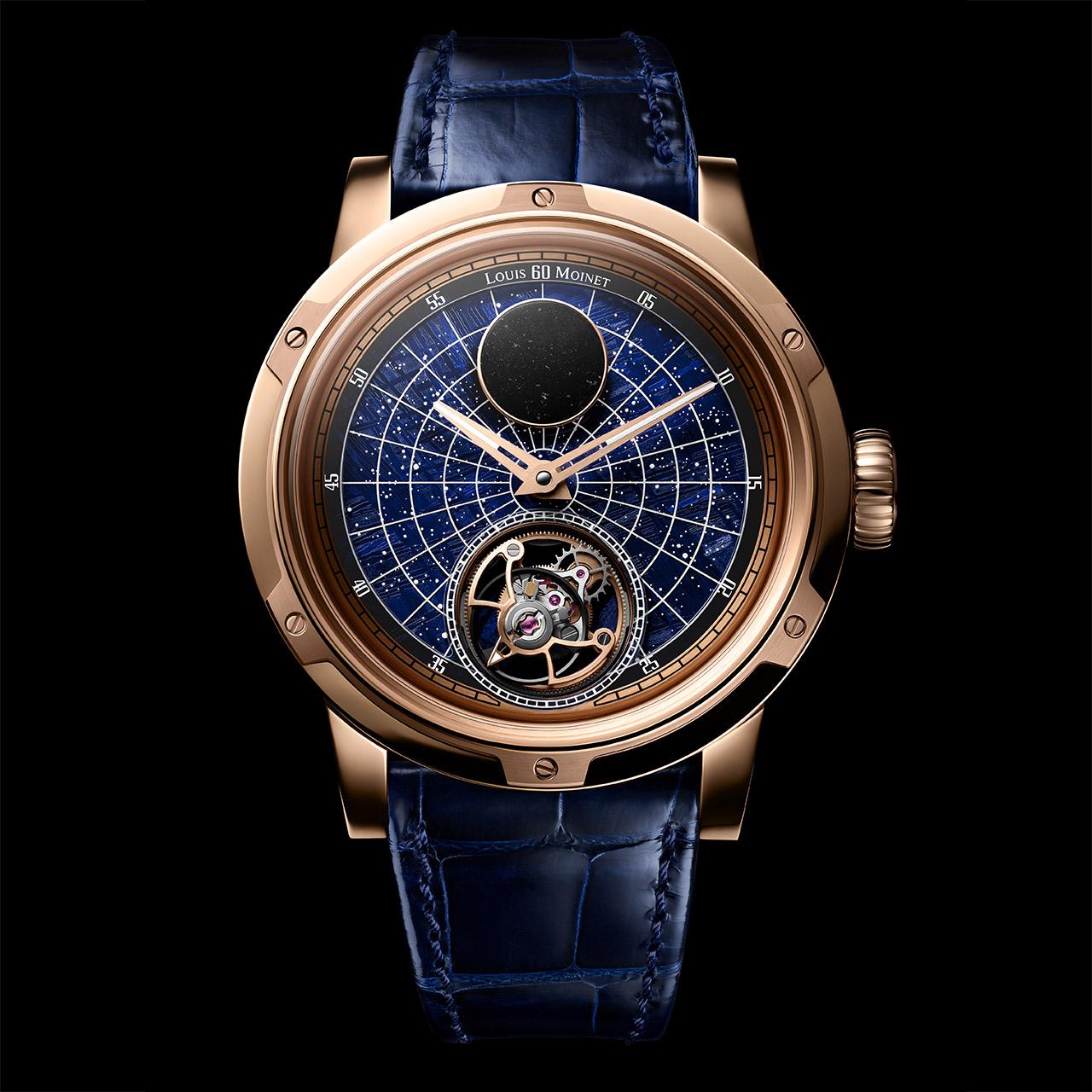
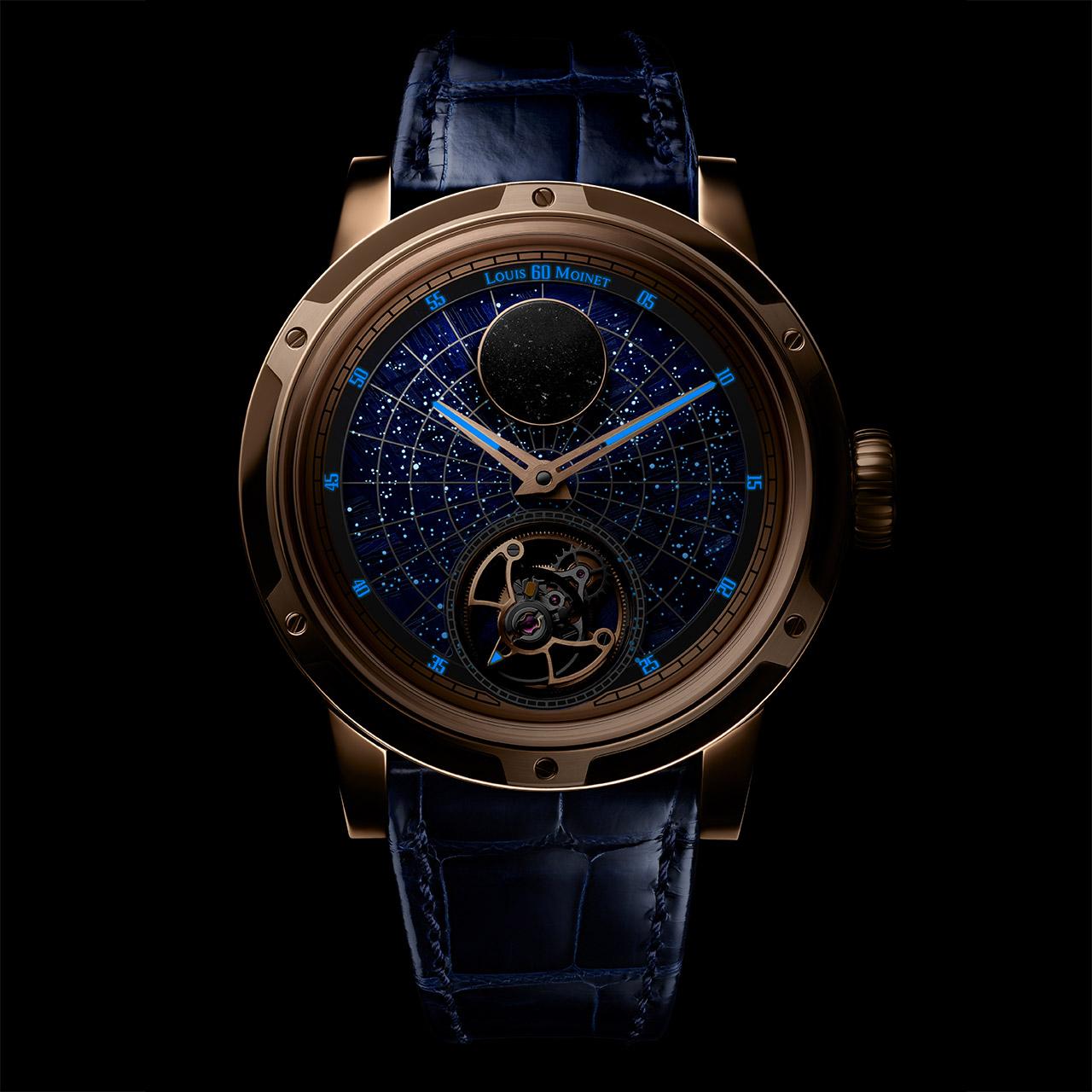
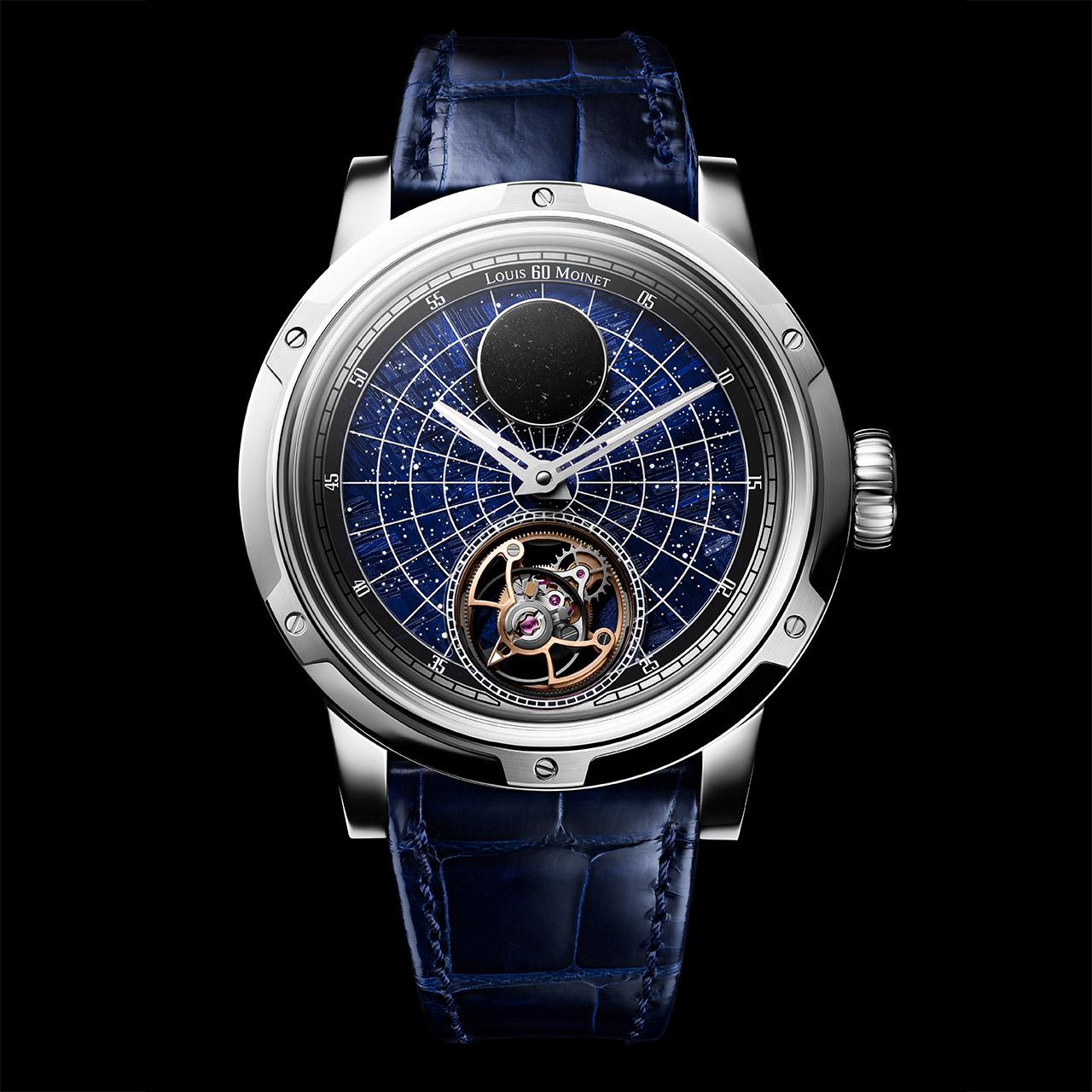
First chronograph ever
The back of the Louis Moinet Starman shows a static solar map. The planets are hand-painted and positioned as they were on March 21, 2013. This date marks an important moment in Louis Moinet’s history. After long research by the brand itself, it declared that Louis Moinet (the brand’s namesake, as he never founded the brand) had invented the first chronograph ever, in 1816. His device was called “compteur de tierces”, French for “third counter”, and all Moinet’s personal records and timepieces were examined to conclude that another chronograph-like mechanical device was not the first chronograph.
Which is an 1821 time-recording instrument invented by Nicolas Mathieu Rieussec (1781–1866). As always with claims like this, it is about definition. Read our story about the chronograph, because men like George Graham and John Ellicott made timing machines and devices as well. Can you call them chronographs in the prestigious “Who was first” game? We’re not sure, but it was decades before Moinet presented his fantastic creation. Back to the new Moinet, which should have been a chronograph of course, when you honor the invention of it…
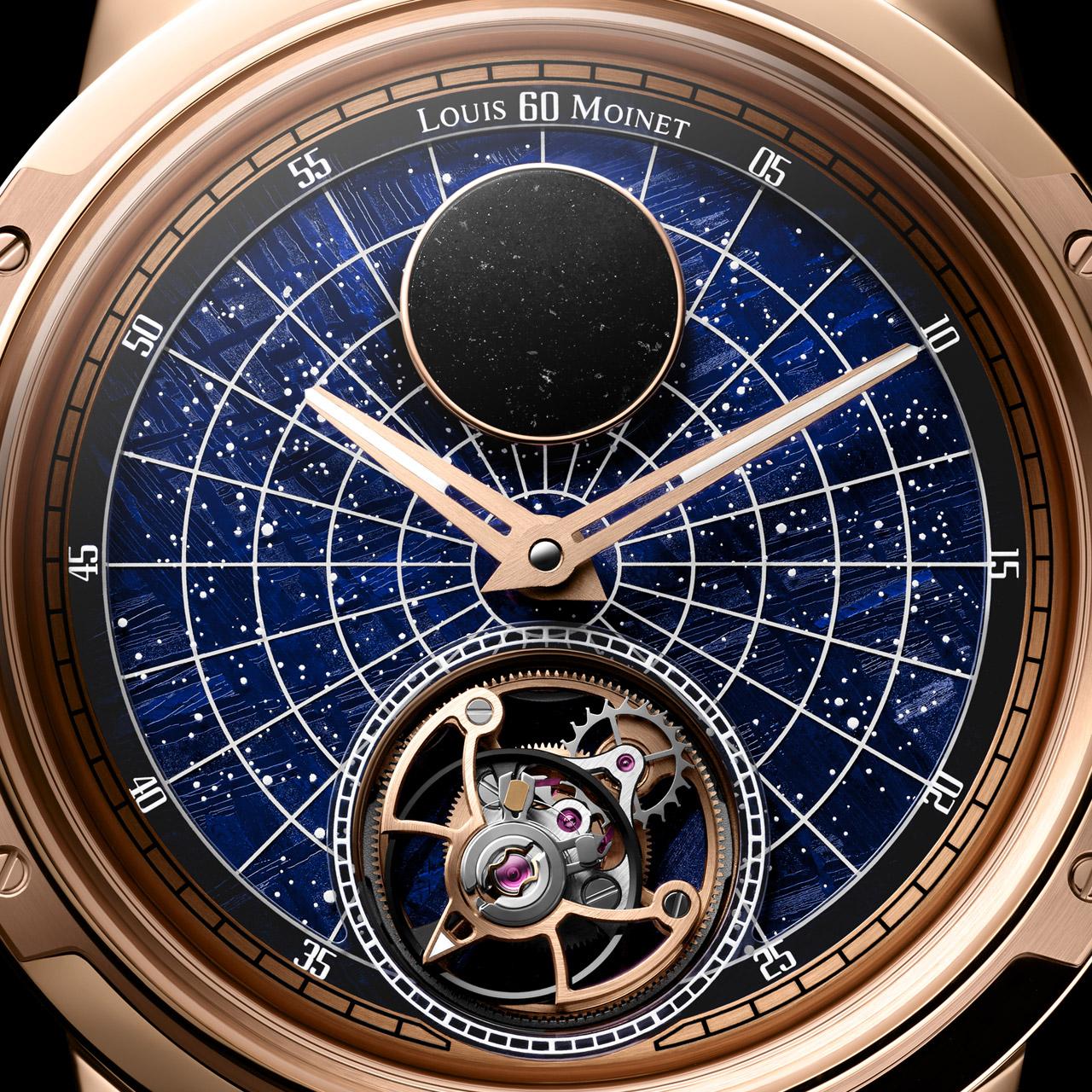
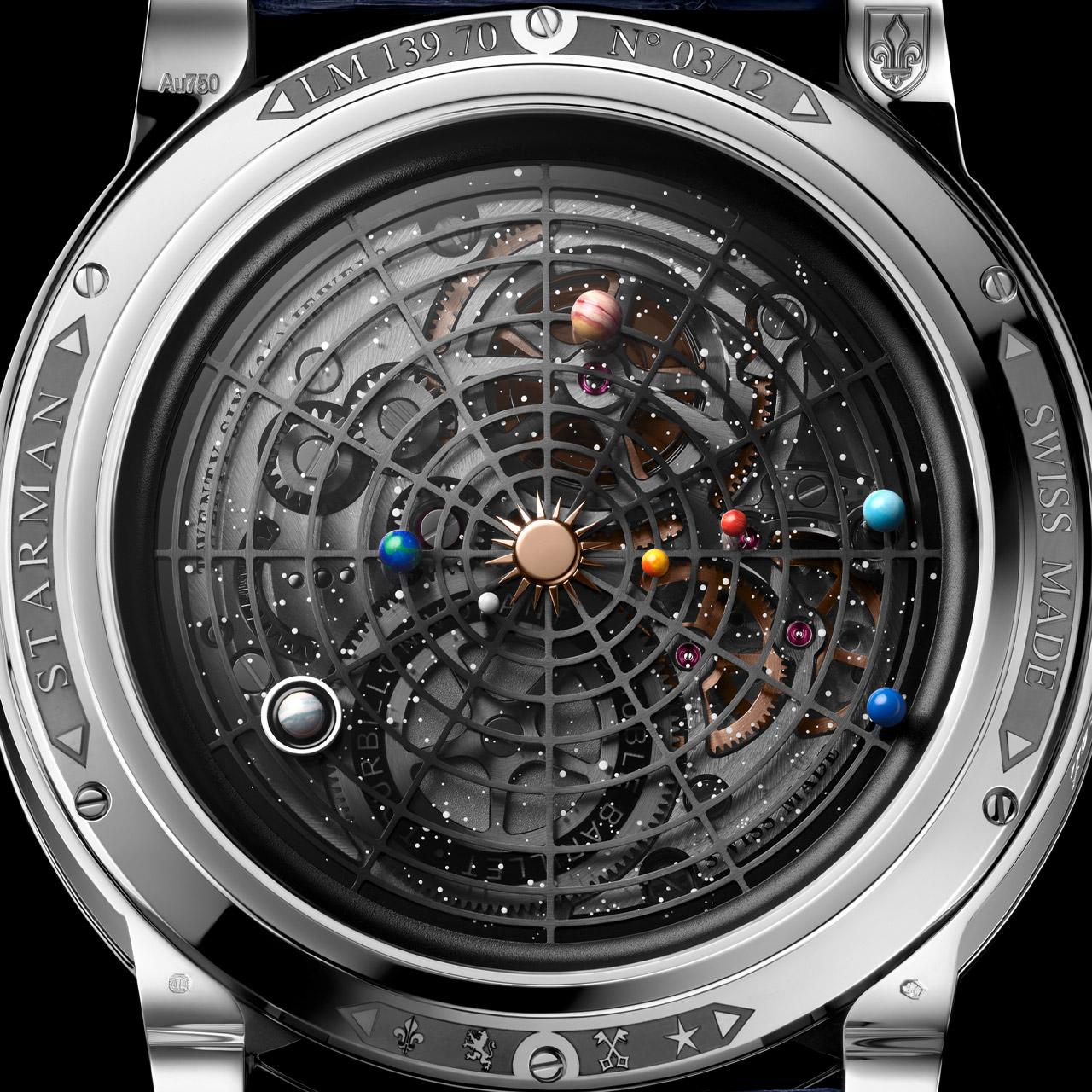
The Louis Moinet Starman has a power reserve of 96 hours
Inside the Louis Moinet Starman runs the Louis Moinet caliber LM139, a hand-wound movement with a flying tourbillon. It is equipped with a double barrel system, ensuring a 96-hour power reserve. The movement is housed in an 18-carat gold case, available in both red and white gold. The watch’s architecture features a mix of brushed and polished surfaces, and open lugs, enhancing its visual complexity. And with a diameter of 47.4 millimeters, the Starman makes a bold statement on the wrist.
Both models are limited to 12 pieces each. If you want to know a little bit more about the Widmanstätten pattern or Thomson structures, read our story about the Arnold & Son Luna Magna Red Gold Meteorite. Another example of the “Who was first” game.
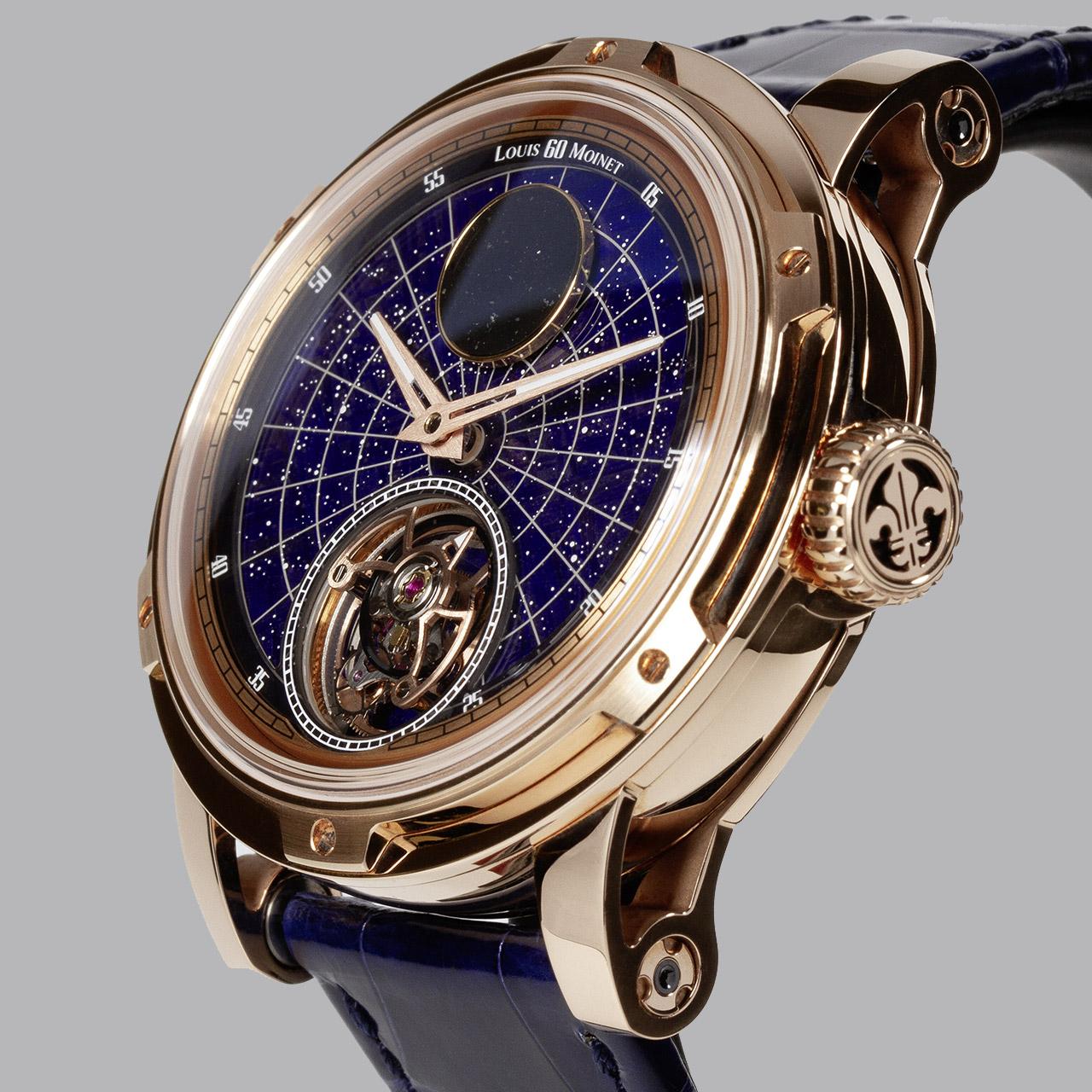
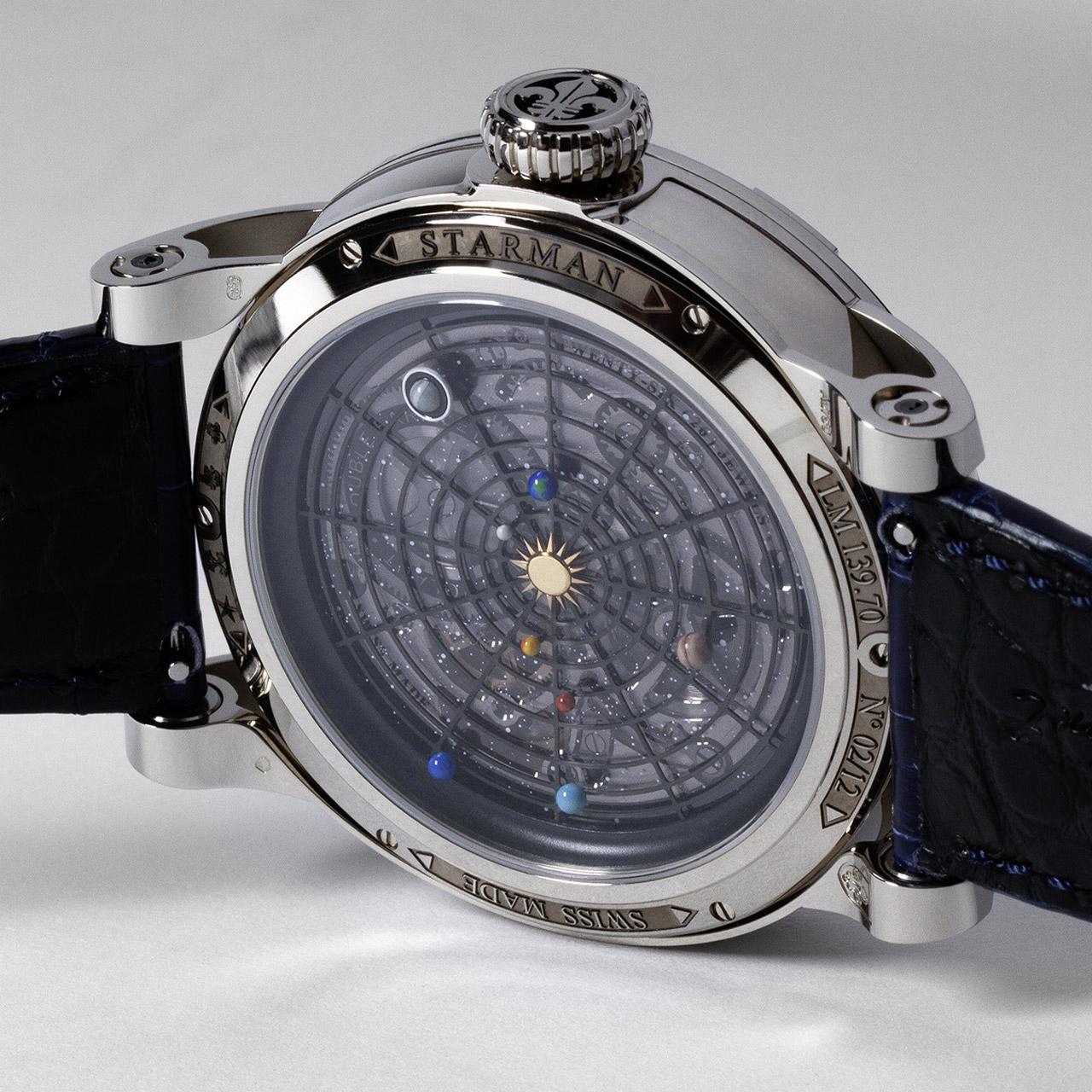
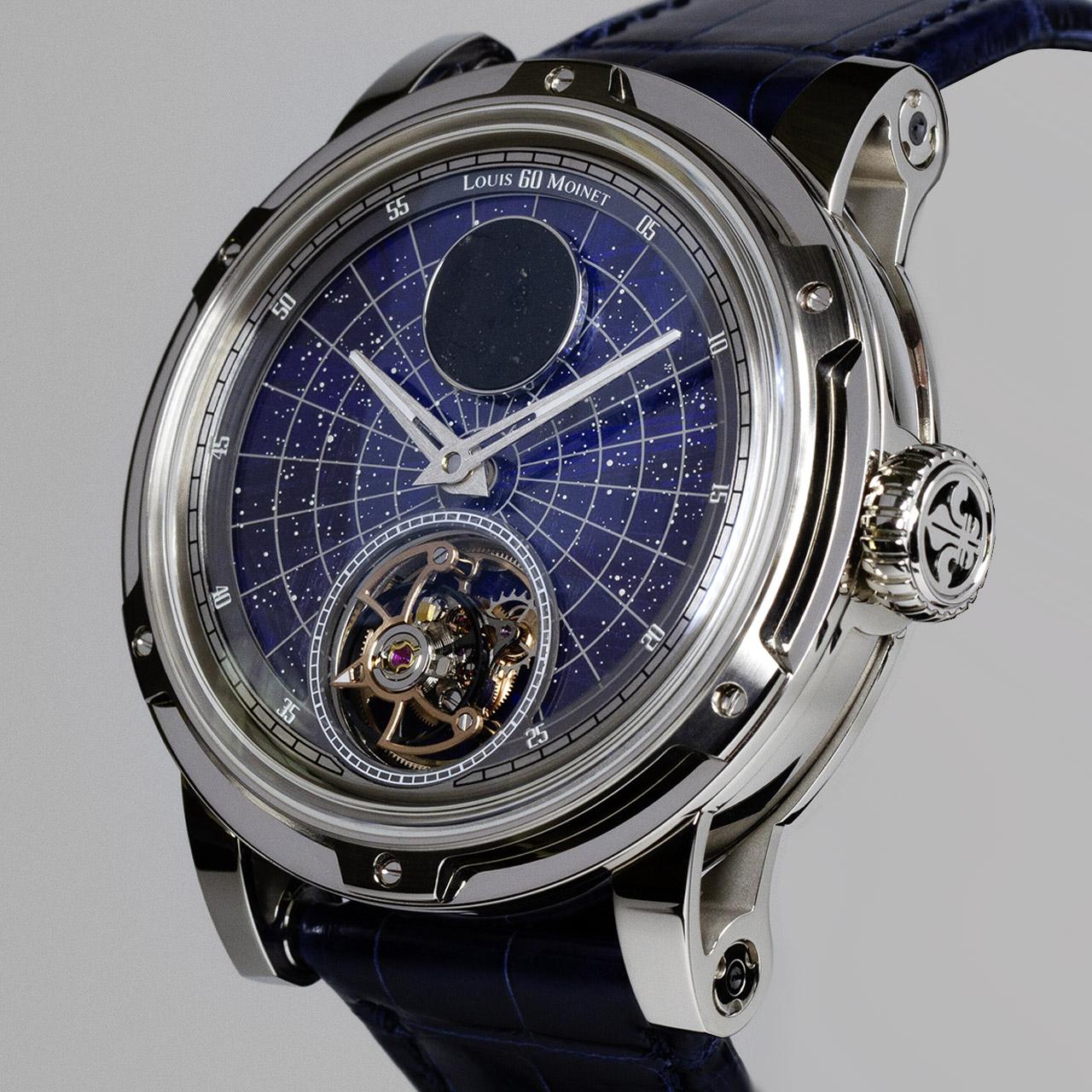
| Technical data and specifications of the Louis Moinet Starman |
| Reference number: LM-139.50.25 (red gold) LM-139.70.20 (white gold) – limited to 12 pieces each |
| Movement: Louis Moinet caliber LM139 | Hand-wound | Frequency: 28,800 vph (4 Hz) | Jewels: 26 | Double barrel | Hours, minutes, tourbillon | Power reserve: 96 hours |
| Case and dial: 47.4 mm | 18k red gold 5N or 18k white gold | Domed sapphire crystal | 18k red gold 5N or 18k white gold screwed bezel | Multi-layered dial with blue-tinted Gibeon meteorite as base, then Sapphire disc with hand-painted stars with luminescent material, then steel gold-colored minute track, then black sapphire 5-minute ring and tourbillon frame with seconds scale, and piece of the Jbilet Winselwan meteorite at 12 | Faceted and skeletonized hour and minute hands with luminova | Sapphire crystal case back with static solar system | Water resistance: 3 ATM / 3 bar / 30 meters / 100 feet |
| Strap: Black or blue leather strap |
| Price Louis Moinet Starman: on request |
| Website: www.louismoinet.com |
